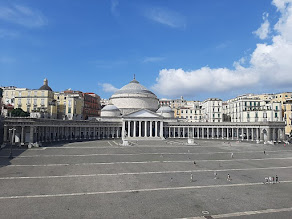Italy’s ‘reluctant’ first president
 |
| Enrico de Nicola |
Enrico De Nicola studied law at Naples University and went on to become one of the most esteemed criminal lawyers in Italy. He also worked as a journalist writing about legal issues.
He later joined the Italian liberal party and was elected to the Camera dei Deputati (Chamber of Deputies) in 1909.
He held minor government posts until the advent of Fascism when he retired from public life to concentrate on his legal career.
De Nicola took an interest in politics again after Mussolini’s fall from power in 1943.
At first King Victor Emmanuel III tried to extricate the monarchy from its association with the Fascists and his son Umberto became Lieutenant General of the Realm and took over most of the functions of the Sovereign. Victor Emmanuel later abdicated and his son became King Umberto II.
But after a constitutional referendum was held in Italy, the country became a republic in 1946.
Umberto went into exile and Enrico De Nicola was elected head of state on 28 June 1946 with 80 per cent of the votes.
He is remembered by his colleagues as a modest man who was unsure at the time whether to accept the nomination.
De Nicola was formally named President of the Italian Republic on 1 January 1948 after having guided Italy through the first difficult months of becoming a republic.
 |
| Rome's Palazzo del Quirinale, official residence of the Italian President: Picture by Markus Mark |
As a former Head of State he was made a Senator for life in 1956.
He died in October, 1959 at Torre del Greco near Naples.
Travel tip:
When in Rome, you can see the Palazzo di Montecitorio, where the Chamber of Deputies has met since 1871, not far from the Pantheon. You can also see the Palazzo del Quirinale, which became the President’s official residence in 1947, near the Trevi Fountain.
Travel Tip:
Torre del Greco, where De Nicola spent his last years, is south of Naples near Pompeii. Its name derives from an ancient watch tower and from the vineyards in the area which produce wine from a grape variety called Greco. The main trade for centuries was coral fishing and Torre del Greco is now famous for producing fine pieces of carved coral and other jewellery.








.jpg)




.jpg)

